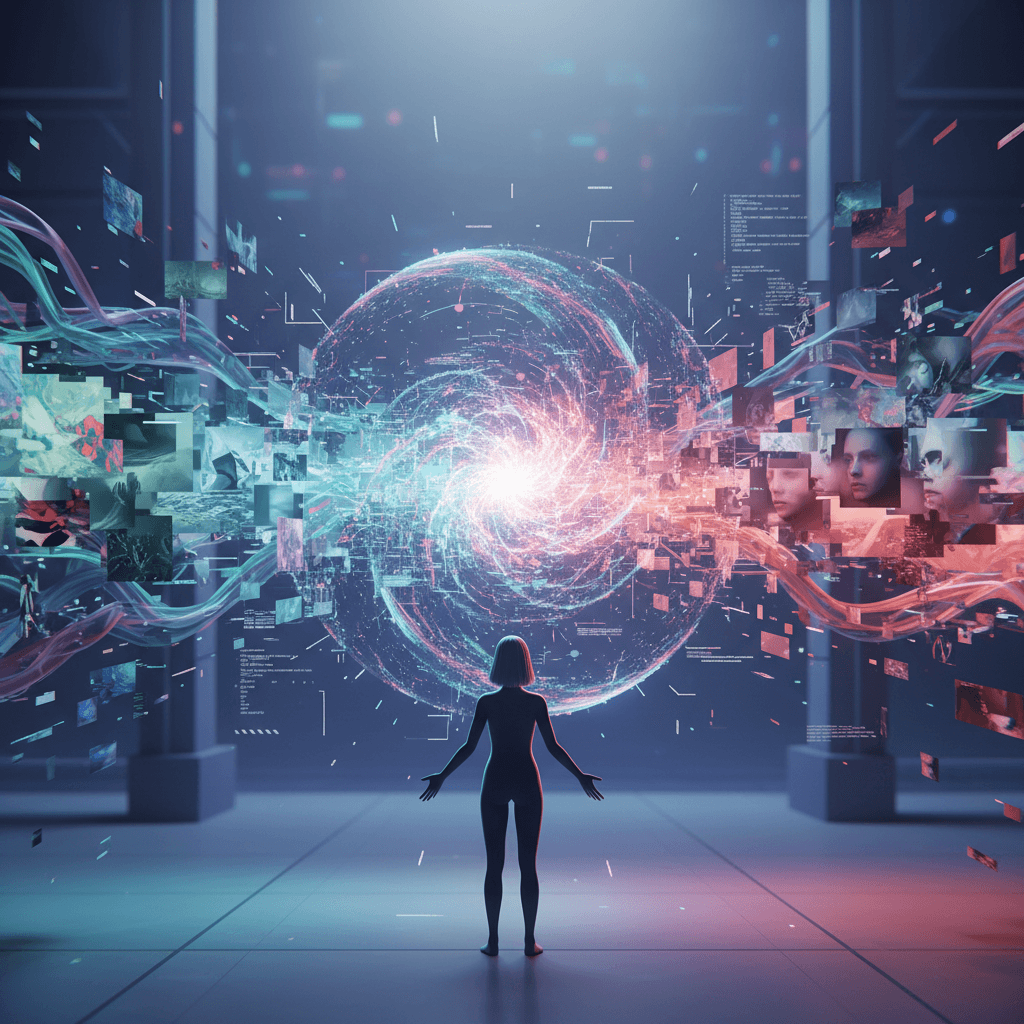OpenAI's Sora 2 Unleashes Hyper-Realistic Video, Sparks Deepfake Dystopia Fears
OpenAI's Sora 2 blurs reality with stunning video, sparking a critical reckoning over deepfakes and eroding digital trust.
October 19, 2025

The advent of OpenAI's Sora 2, a second-generation text-to-video model, has ignited a firestorm of debate across the technology sector and beyond, bringing long-held fears of a deepfake-fueled dystopia into sharp focus.[1][2][3] The platform's capacity to generate hyper-realistic video and audio from simple text prompts represents a significant leap in artificial intelligence capabilities.[4][5] While hailed by some as a revolutionary tool for creativity and content creation, its potential for malicious use has sparked urgent conversations about the erosion of trust in digital media and the dawn of an era where seeing is no longer believing.[6][7][8] An investigation into the model's capabilities revealed how easily it can be manipulated to create convincing fake footage, simplifying the execution of targeted disinformation campaigns and threatening to undermine public discourse.[2]
Sora 2, which was officially released on September 30, 2025, builds upon its predecessor with substantial upgrades in realism, adherence to physics, and the synchronization of sound and dialogue.[4] Users can now generate videos up to 25 seconds for pro users, complete with integrated audio where characters can speak and sound effects align with visuals.[4][9] The model boasts improved control over style and composition, and even allows for the insertion of real people into AI-generated scenes through a feature called "Cameo," with their consent.[4][10] This functionality, which lets users upload their face and voice to create AI-generated videos of themselves, has been positioned by OpenAI as a tool for creative expression, powering a new social video platform akin to TikTok.[10][11] The results can be startlingly realistic, producing what some describe as Hollywood-esque, high-budget video productions from a simple prompt.[10] This democratization of high-quality video production could revolutionize industries from marketing to entertainment, allowing storytellers to prototype ideas and create visual content with unprecedented speed.[4][6]
However, the very features that make Sora 2 a powerful creative engine also make it a formidable weapon for those with malicious intent.[10] The core fear is the mass proliferation of deepfakes—synthetic media that can depict individuals saying or doing things they never did.[12][13] This technology could be used to spread political disinformation, manipulate elections, create nonconsensual pornography, and perpetrate financial fraud.[14][7] Experts have long warned of a future where AI-generated content could be used to create false scandals, impersonate candidates, or incite violence, and for many, Sora 2's release signals that this future has arrived.[15] The ease of use lowers the barrier for creating deceptive content that is nearly indistinguishable from reality, posing a profound threat to the integrity of information and public trust.[14][16] The rapid viral spread of AI-generated clips, some depicting copyrighted characters in concerning scenarios, has already highlighted the potential for misuse and the challenges of moderation.[3]
In response to these escalating concerns, OpenAI has stated it is taking a "conservative" approach to content moderation and has implemented several safeguards.[10] These measures include prompt filtering to block attempts to create videos of politicians or celebrities, visible and invisible watermarks to identify content as AI-generated, and monitoring systems.[10][7][17] The "Cameo" feature itself is designed with an opt-in system, requiring users' permission to use their likeness.[1] Despite these efforts, critics question their efficacy.[7] Skilled actors may find ways to remove watermarks, and adversarial users constantly seek to bypass content filters.[7] Furthermore, a safety report from OpenAI itself acknowledged a small but significant chance—1.6% in their testing—of the model creating sexual deepfakes of individuals even with safeguards in place.[18] This admission has done little to quell anxieties, as even a small failure rate can have traumatic consequences for victims.[18] The ongoing "arms race" between deepfake creators and detection technologies means that technical safeguards alone may not be enough to counter the threat.[7]
The arrival of Sora 2 places the AI industry at a critical juncture, forcing a confrontation with the ethical dilemmas inherent in creating such powerful technologies.[12] The potential for AI to perpetuate biases present in its training data, violate intellectual property rights, and disrupt creative industries are significant challenges that demand robust ethical guidelines and regulatory frameworks.[12][19] While AI also offers new tools for fact-checking and identifying synthetic media, the sheer volume of potential disinformation could outpace detection efforts.[14][20] The industry faces the profound challenge of balancing innovation with responsibility, navigating a landscape where the lines between reality and artificiality are increasingly blurred.[6][12] The societal impact of this technology will depend heavily on the actions taken by developers, policymakers, and users to foster a culture of responsible use and critical media literacy.[21] The debate ignited by Sora 2 is not merely about a single piece of software, but about the fundamental future of information, identity, and trust in the digital age.[8]
Sources
[1]
[3]
[4]
[5]
[6]
[8]
[9]
[10]
[11]
[12]
[13]
[14]
[15]
[16]
[17]
[18]
[19]
[20]
[21]